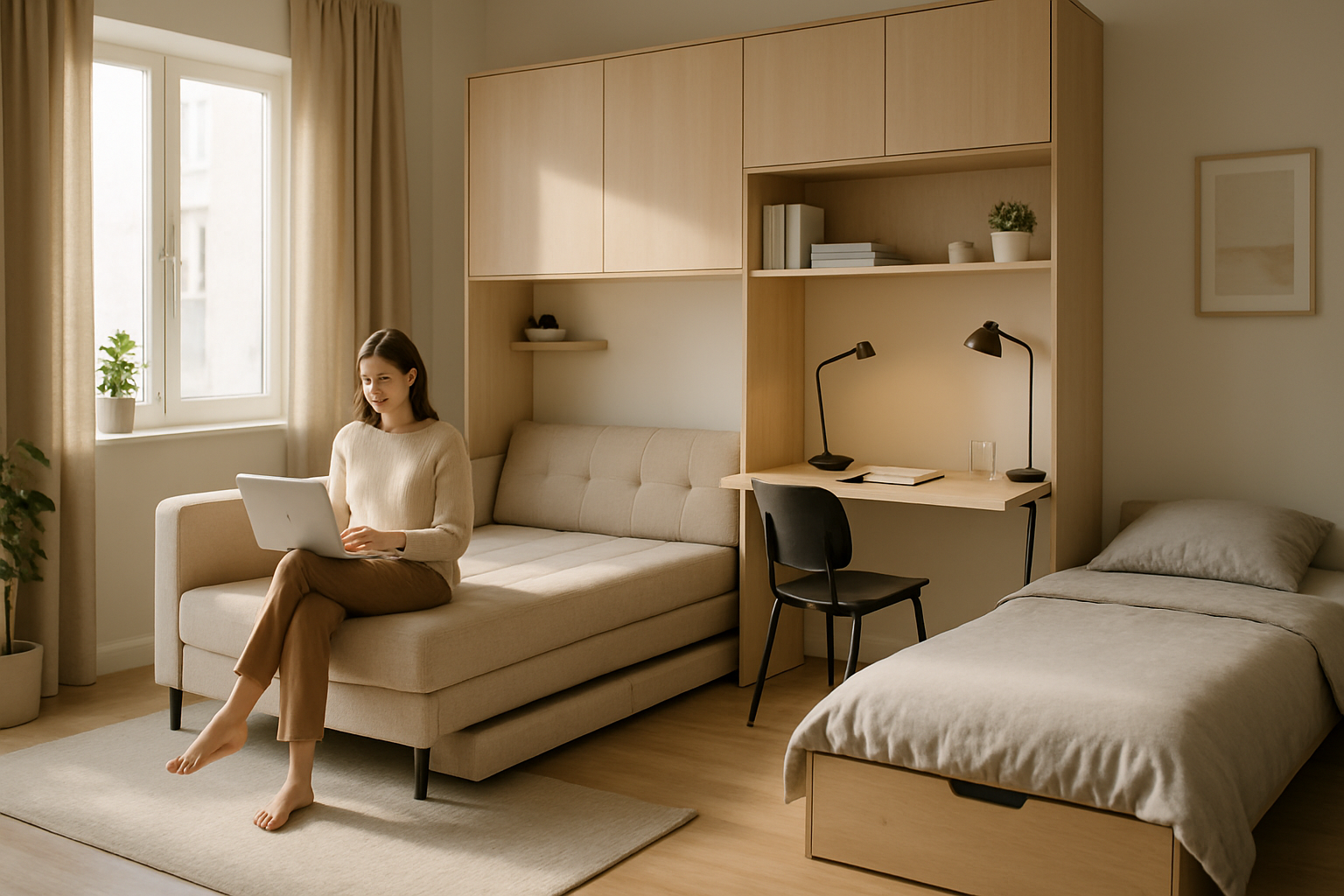Smart Furniture for Modern Living Spaces and Home Offices
Smart furniture blends traditional design with connected features to make day-to-day living more convenient and adaptable. These pieces—motorized desks, sensor-equipped sofas, adjustable beds and modular storage—use embedded sensors, connectivity and software to respond to users, improve ergonomics and save space. As smart home devices become more common, furniture that integrates technology can reshape how people use shared and personal rooms.

What is smart furniture?
Smart furniture describes physical pieces—chairs, desks, sofas, beds, cabinets—embedded with sensors, actuators, power and connectivity to add functionality beyond static form. Common capabilities include motorized height adjustment, built-in charging, occupancy sensing, integrated lighting and environmental monitoring. The goal is to make furniture responsive (for example, a desk that remembers preferred heights), more comfortable, and better integrated with broader smart home systems while preserving aesthetics and material quality.
How does smart furniture fit a smart home?
Smart furniture connects to the wider smart home ecosystem through local networks and ecosystems, allowing coordinated behaviors like dimming lights when a smart sofa detects occupancy or lowering blinds when a smart bed senses sleep. Integration can work through direct Wi‑Fi or Bluetooth links, or via hubs that speak Zigbee, Z‑Wave or newer standards like Matter. Effective integration prioritizes clear control paths (apps, voice assistants, physical controls) and consistent privacy and security practices from vendors.
What technology powers smart furniture?
Hardware often includes microcontrollers, wireless radios, proximity and pressure sensors, motors or actuators, and battery or wired power. Software components are mobile apps, firmware, cloud services and sometimes on-device AI for local decision-making. Connectivity options commonly used are Wi‑Fi, Bluetooth Low Energy, Zigbee, Z‑Wave and Thread; Matter aims to simplify cross-vendor compatibility. Firmware updates, encryption, and transparent data policies are important technical considerations to maintain security and longevity.
How does smart furniture change a living space?
In a living space, smart furniture can reduce clutter, adapt layouts, and enhance comfort. Examples include modular seating with removable charging hubs, coffee tables that open to reveal storage and wireless charging pads, or sofas that reconfigure into guest beds with motorized components. Sensor-driven functions—such as auto-dimming reading lights or HVAC interactions tied to occupancy—can make rooms feel more responsive. Designers also emphasize materials and finishes that mask electronics, preserving a cohesive aesthetic while adding functionality.
Can smart furniture support a home office?
Smart furniture is particularly useful for home office setups. Height-adjustable desks with memory presets support ergonomics and sit-stand work patterns; integrated cable management and USB-C power reduce desk clutter; chairs with posture sensors can prompt breaks or adjustments. For hybrid work, modular pieces that fold or hide equipment let a living room double as a workspace. When evaluating home office solutions, check load capacity, adjustment ranges, stability, warranty terms and whether software features require cloud subscriptions.
Smart furniture brings new considerations for maintenance, privacy and accessibility. Mechanical parts such as motors and hinges need periodic inspection; batteries require replacement over time. Firmware updates can add features but may also change behavior—confirm update policies before purchase. On privacy, review what telemetry is collected and whether data is processed locally or in the cloud. From an accessibility perspective, motorized and sensor-enabled controls can improve independence for users with mobility limitations, but interfaces should remain simple and offer manual overrides.
Design choices and installation affect how well smart furniture functions in your area or with local services. Measure spaces and plan for power access, ventilation around electronics, and Wi‑Fi coverage. If you use a professional installer or local services for complex or heavy items, ask about warranties, assembly practices and how software setup will be handled. Consider sustainable materials and modular designs if you anticipate moving, resizing, or repurposing pieces in the future.
Smart furniture continues to evolve alongside smart home trends and interoperability efforts. Expect ongoing improvements in energy efficiency, quieter actuators and more standardized communication protocols aimed at easier cross-device operation. For now, focusing on compatibility, durability, clear privacy policies and straightforward user controls will help you select smart furniture that genuinely enhances daily life without adding unnecessary complexity.
In summary, smart furniture merges functional design with embedded technology to improve ergonomics, save space and integrate living spaces with connected devices. When evaluating options, prioritize compatibility with your existing smart home setup, clear maintenance expectations, transparent data practices and features that solve real use‑case problems for your living space or home office. Thoughtful selection can make these pieces long-lasting contributors to comfort and productivity rather than short-lived tech novelties.






